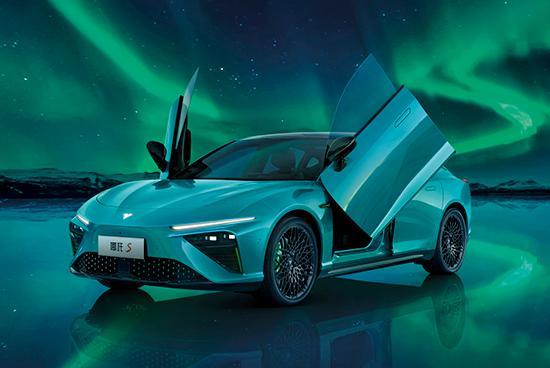Article by | Li Ka-shing
Editor | Cold Zelin
Recently, NIO has released its third model under its brand, the NIO S Special Edition. The new car is positioned as a medium to large-sized sedan, with a pre-sale price of 3.388 million yuan and a global limit of 999 units.
For new energy vehicle enterprises, each new car means a new step in corporate development. Nio is no exception, and this car is more like Nio’s “stepping stone” in the mid-to-high-end market.
Why is the NIO S called a “stepping stone”? Because NIO currently has two models for sale, the NIO V and the NIO U, both of which are priced below 200,000 yuan. The NIO S Special Edition, on the other hand, raises the price to the 300,000 yuan price range, far surpassing NIO’s previous car pricing standards.
Whether the new car can have a certain impact depends on the product itself.
NIO S vs. XPeng P7
As a medium to large-sized sedan, the new car is 4980/1980/1450mm in length, width, and height, respectively, with a wheelbase of 2980mm. In terms of size, the NIO S mainly targets vehicles such as the XPeng P7, the Leapmotor C01, and the BYD Dolphin.
Compared to vehicles in the same class, the NIO S has certain advantages in terms of size and positioning, but the pre-sale price of 3.388 million yuan may cause many potential users to choose to abandon NIO and instead opt for the cheaper Leapmotor C01 or the BYD Dolphin.
In terms of appearance, the most eye-catching feature of the NIO S is its scissor door design, which is similar to the limited edition XPeng P7’s Pengyi version, which starts at 3.8 million yuan.
In reality, the gimmick of the Pengyi version of the P7 means more than its actual significance, and it is unknown how many have been sold. However, it has increased the overall visibility of the P7. It is not difficult to see that NIO S also wants to replicate XPeng’s success, but whether the mass-produced version can have strong product power remains to be seen in future official announcements.
From the power data that has been released, the NIO S dual-motor four-wheel drive version has an acceleration time of 3.9 seconds from 0 to 100 km/h, with a CTLC range of 650 km. For the first time, NIO has applied its self-developed “Tiango Battery” to the NIO S.
Compared with ordinary battery packs, the “Tiango Battery” has mainly optimized in two aspects. One is to increase the battery pack’s heat dissipation structure design. By filling high-temperature resistant, flame-retardant materials with a resistance of 1000 degrees between the battery cores, thermal runaway and self-ignition of the vehicle are prevented. Second, to alleviate the problem of battery shrinkage in winter range, a warming system is set up for the battery.
However, in the “key point” of intelligent driving that XPeng P7 has broken through, NIO seems to be somewhat “inadequate.”Perhaps due to cost reasons, NIO did not equip the new car with a lidar, but instead equipped it with the TA PILOT3.0 intelligent driving assistance system, which includes 5 millimeter-wave radars and 11 cameras and can achieve functions such as high-speed navigation assistance, memory parking, and vehicle recall.
It is worth noting that the TA PILOT4.0 intelligent driving assistance system, which NIO has already announced, does include a lidar. Although its cost and technical difficulties are relatively higher than those of the 3.0 version, it was explicitly stated by NIO’s officials in February of this year that the TA PILOT4.0 system will be launched on the NIO S.
It is unclear whether NIO is trying to maintain its original intention of “making cars for the people”, or whether the potential customers of the NIO S are more interested in vehicle performance than in intelligence.
In any case, the fact that the top version of the NIO S does not come with TA PILOT4.0 seems to confirm the label of “gimmick”.
As a “new” brand founded in 2018, NIO has mostly been in the second-tier position during the past three years. However, with the continuous growth of the new energy market in 2022, NIO has temporarily entered the top tier. During the first five months of this year, NIO has stayed in the position of the second-best-selling vehicle for four of them, with sales reaching 11,009 units in May.
However, for NIO, whose main products are priced between 50,000 to 80,000 RMB, the value of the numbers is not high, and the low profit cannot guarantee high investment in research and development. Therefore, it is not difficult to understand why NIO has launched products that aim to compete in the high-end market.
The problem, however, is that NIO’s approach is somewhat rash, and brand strength and product strengths are necessary to attack the high-end market. Most traditional automakers have chosen to establish new brands to isolate them from their previous low-price brands.
Simply copying this approach does not necessarily increase product competitiveness for NIO and could potentially become a fatal weakness for its brand.
This article is a translation by ChatGPT of a Chinese report from 42HOW. If you have any questions about it, please email bd@42how.com.
